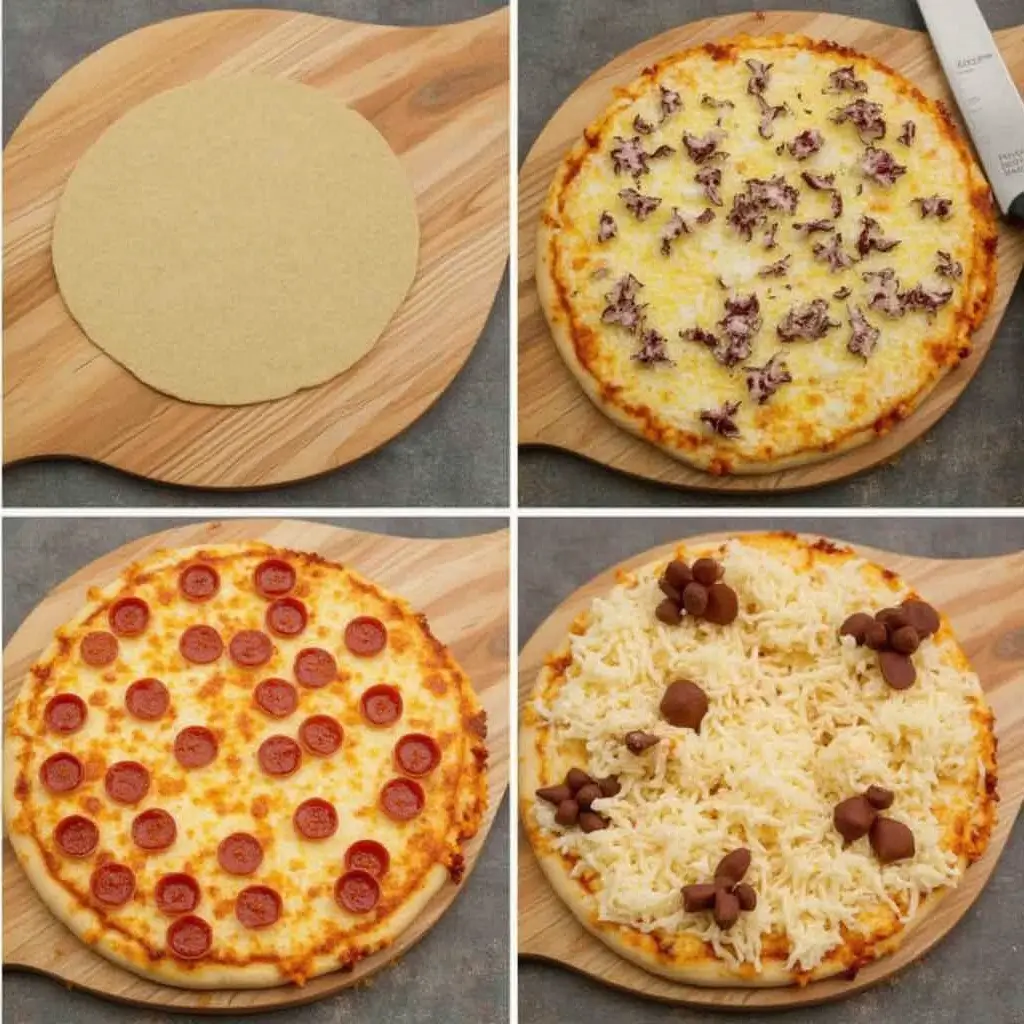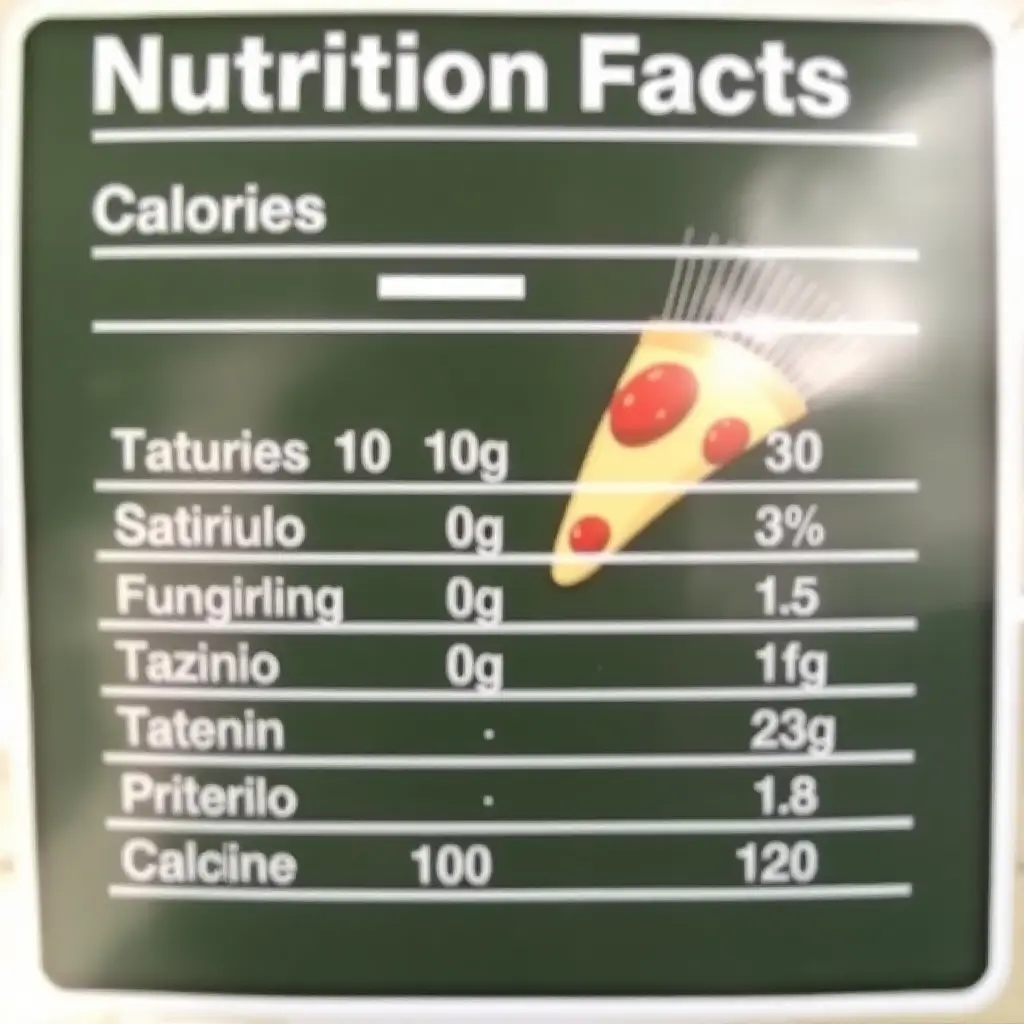New York-style pizza recipe holds a special place in the culinary world. More than just a dish, it’s a cultural phenomenon that has captured the hearts of pizza lovers far beyond the Big Apple. In this comprehensive guide, we’ll explore every aspect of its preparation, from ingredients to techniques, so you can recreate this unique experience in your kitchen.
How to make New York-style pizza
New York pizza traces its roots to the early 20th century, when Italian immigrants began adapting their traditional recipes to local tastes and constraints. Gennaro Lombardi, considered the father of New York pizza, opened the first pizzeria in New York City in 1905, laying the foundation for what would become a distinctive style.
What sets New York pizza apart from its Italian cousins is its adaptation to American lifestyles. Larger portions, the ability to eat on the go by folding the slice, and cooking adapted to gas ovens have shaped its unique identity.
Distinctive Features
The Unique Structure of the Crust
The New York pizza crust is distinguished by its multi-layered structure:
- The external base (2 mm) develops a particular crispiness thanks to the direct heat of the pizza stone
- The middle layer (3-4 mm) remains soft and slightly elastic
- The transition zone (1-2 mm) between the sauce and the dough plays a crucial role in the balance of textures
- The “cornicione” (the edge) has a slight elevation which forms a characteristic golden ridge
- While both Neapolitan and New York-style pizzas are beloved around the world, the key difference lies in the crust. New York-style pizza is flatter and crispier
- Using a pizza stone is the best way to bake your New York-style pizza at home, helping to get a crispy crust and perfectly melted cheese
- New York-style pizza is known for its thin, crispy crust and perfectly melted cheese. In this guide, we’ll teach you how to recreate this iconic pizza at home
The Science Behind Texture
The characteristic texture of New York pizza results from a precise balance between several factors:
- The hydration rate of the dough (about 65%)
- Optimal formation of the gluten network
- Slow fermentation at low temperature
- Cooking at high temperatures on a very hot surface
The Essential Ingredients
Flour: The Foundation of Success
The choice of flour is crucial. A T55 flour or American “bread flour”, with a protein content between 12 and 13%, offers the best compromise to develop the necessary gluten network. This protein content makes it possible to obtain:
- An elastic structure that facilitates spreading
- A crust that remains crispy even after cooling
- A characteristic chew reminiscent of that of New York pizzerias


Water: More Than Just an Ingredient
Water quality and temperature directly influence fermentation and flavor development:
- Water at room temperature (21-23°C) promotes optimal fermentation
- Water hardness can affect gluten structure
- The water to flour ratio determines the final texture of the crust
Salt: A Multiple Role
Salt doesn’t just add flavor. It plays several essential roles:
- Strengthening gluten structure
- Fermentation control
- Improved crust coloring
- Development of complex flavors
The Preparation Technique
Kneading: A Crucial Step
The food processor kneading method has several advantages:
- Rapid and efficient development of gluten
- Less oxidation of the dough
- Better temperature control
- More consistent results
Detailed Protocol of Kneading
- Mix the dry ingredients
- Gradually add the liquids
- Knead in 30 second pulses.
- Check the formation of the gluten window
- Form a ball and transfer for fermentation
Fermentation: The Secret of Flavors
Slow fermentation at low temperature (24-48 hours) allows:
- The development of complex aromas
- Improving digestibility
- Better dough structure
- Easier handling
The Sauce: The Soul of Pizza
The Traditional Recipe
New York sauce is characterized by its simplicity and the intensity of its flavors:
Ingredients for the Sauce
- 800g whole San Marzano tomatoes
- 2 cloves garlic, minced
- 2 tablespoons olive oil
- 1 teaspoon dried oregano
- Salt and freshly ground black pepper
- A pinch of sugar (optional)
Preparation of the Sauce
- Roughly crush the tomatoes by hand
- Brown the garlic in olive oil
- Add tomatoes and seasonings
- Simmer over low heat for 30-45 minutes
- Allow to cool completely before using.
Cheese: The Art of Mixing
The Choice of Cheeses
The traditional combination includes:
- 70% low moisture mozzarella
- 20% matured provolone
- 10% finely grated parmesan
Preparing Cheese
- Grate the cheeses separately
- Mix gently
- Freeze briefly before use
- Spread evenly over the pizza
Cooking: The Final Step
Preparing the Oven
- Preheat the oven to maximum (250-280°C)
- Place the pizza stone in the cold oven
- Maintain temperature for at least 45 minutes
Cooking Technique
- Bake the pizza on the preheated stone
- Bake for 8-10 minutes until desired color.
- Monitor the formation of bubbles
- Remove when the cheese is completely melted.

Troubleshooting and Advice
Common Problems and Solutions
Dough Too Sticky
- Reduce hydration slightly
- Use more flour for shaping
- Check the room temperature
Crust Not Crispy Enough
- Increase the oven temperature
- Preheat the stone longer
- Check the thickness of the dough
Burning Cheese
- Freeze cheese before use
- Reduce the quantity
- Adjust the position in the oven
Conservation and Reheating
Conservation Methods
- At room temperature: up to 4 hours
- In the refrigerator: up to 3 days
- In the freezer: up to 2 months (pre-cooked)
Reheating Techniques
- Pan-frying: Preferred method to preserve texture
- In the oven: on a preheated stone
- To avoid: microwave
Variations and Customization
Traditional Toppings
- Pepperoni
- Mushrooms
- Peppers
- Caramelized onions
- Italian sausage
Modern Innovations
While respecting the New York spirit, we can explore:
- Alternative Cheese Combinations
- Local seasonal garnishes
- Revisited sauces
Recommended Equipment
Indispensable
- Pizza stone or pizza steel
- Pizza peel
- Food processor or kneader
- Accurate oven thermometer
Optional but Useful
- Precision balance
- Pizza spatula
- Pizza roulette
- Fermentation containers
Conclusion
New York pizza strikes the perfect balance between tradition and convenience. It takes care and patience to make, but the results are worth it. With the techniques and tips detailed in this guide, you have all the tools you need to create authentic New York pizzas at home.https://tastenrecipes.com/easy-black-pepper-chicken/
Remember, perfection comes with practice. Every oven is different, every hand has its technique, and it is through experimentation that you will find your own style while respecting the fundamentals that make this iconic pizza style famous.
To Go Further
- Take part in pizza workshops
- Exchange with other enthusiasts
- Document your experiences
- Experiment with different flours and techniques
The true tradition of New York pizza lies in its ability to evolve while maintaining its unique identity. Now it’s your turn to be a part of this ever-evolving story

